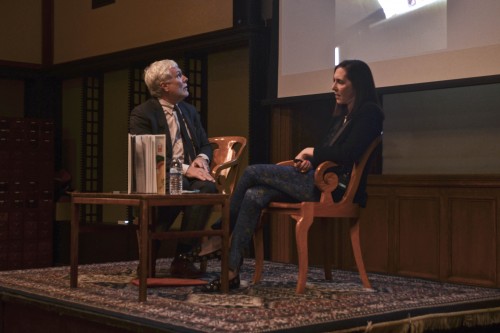On the evening of Wednesday the 18th, writer, editor and creative director Glenn O'Brien and photographer Laurie Simmons engaged in an eclectic artistic dialogue at the New York Public Library about dolls. Laurie Simmons has been photographing dolls since 1976; except now they are life sized and appear hauntingly realistic. The two primarily spoke about Simmons' recently published book, “The Love Doll,” which is comprised of a chronological series of staged photographs, starting upon the arrival of a box of two Japanese “love dolls”. The conversation began with O'Brien expressing genuine curiosity about the reason why love dolls exist. Simmons referenced a documentary called “Love Me, Love My Doll.” The film chronicles stories of men in Japan who have formed intimate relationships with these synthetic figurines, which are essentially produced for sexual purposes. She describes the Japanese men's relationships as unsettling and horrific. The doll itself is incredibly life-like, and as described by Simmons, “Beautifully sculpted.”
O'Brian asked, “What's the appeal?” Simmons replied that she didn't know, but feels that if in a photograph you're able rise an emotion out of an inanimate object it is much more impressive than doing so with a real person. Her love doll series is more than impressive. Each image evokes a visceral reaction. Somehow, through stunning composition and a unique, original style, Simmons creates an image that draws the viewer to adopt an impression of sympathy for the photographed doll, as if the object were expressing real, live emotion. The feelings perceived to be emitting from the doll range from struggling with gender roles and stereotypes, to simple emotions like loneliness and frustration.
Even with such inventive and spectacular images of the love doll, which many paralleled Simmons' early photography with regular sized dolls in terms of subject matter and color scheme (often blue or yellow), there was still a lingering curiosity about the physical doll itself. It was expressed by O'Brien, I felt it, and you could sense the listeners did too. It was also wondered if Simmons had developed any type of relationship with the love dolls. She bluntly stated, “I don't anthropomorphize them.” Simmons doesn't even handle the dolls. They are handled by assistants and stored in closets and under sheets, merely props.
Despite the strangeness that is presented in the idea and existence of a “high-end Japanese love doll,” Laurie Simmons has managed to create a tasteful, intriguing, and compositionally elegant collection of photographs that are sure to leave anyone who views them visually and emotionally moved.
Review and Photographs by Carlos J. Fonts




